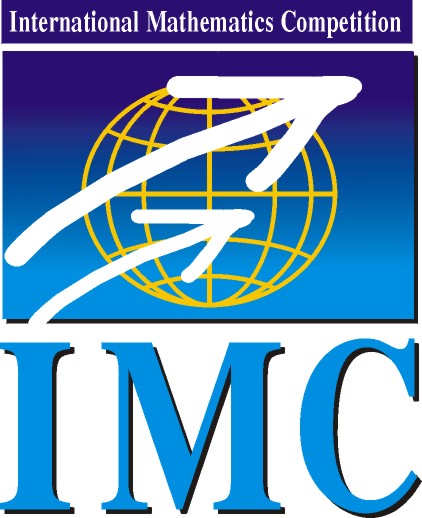
|
International Mathematics Competition
|
IMC 2026 |
| Information | Results | Problems & Solutions |
IMC2017: Day 2, Problem 6
6. Let $f:[0;+\infty)\to \mathbb R$ be a continuous function such that $\lim\limits_{x\to +\infty} f(x)=L$ exists (it may be finite or infinite). Prove that $$ \lim\limits_{n\to\infty}\int\limits_0^{1}f(nx)\,\mathrm{d}x=L. $$
Proposed by: Alexandr Bolbot, Novosibirsk State University
Solution 1. Case 1: $L$ is finite. Take an arbitrary $\varepsilon>0$. We construct a number $K\ge0$ such that $\left|\int\limits_0^{1}f(nx)\,\mathrm{d}x-L\right|<\varepsilon$ for $n\ge K$.
Since $\lim\limits_{x\to +\infty} f(x)=L$, there exists a $K_1\ge0$ such that $\big|f(x)-L\big|<\frac\varepsilon2$ for every $n\ge K_1$. Hence, for $n\ge K_1$ we have \begin{gather*} \left|\int_0^1 f(nx)\,\mathrm{d}x-L\right| = \left|\frac1n\int_0^n f(x)\,\mathrm{d}x-L\right| = \frac1n\left|\int_0^n \big(f-L\big)\right| \le \\ \le \frac1n\int_0^n |f-L| = \frac1n \left(\int_0^{K_1}|f-L|+\int_{K_1}^n|f-L| \right) < \frac1n \left(\int_0^{K_1}|f-L|+\int_{K_1}^n \frac\varepsilon2 \right) = \\ = \frac1n \int_0^{K_1}|f-L| + \frac{n-K_1}{n}\cdot\frac\varepsilon2 < \frac1n \int_0^{K_1}|f-L| + \frac\varepsilon2. \end{gather*} If $n\ge K_2=\frac2\varepsilon\int_0^{K_1}|f-L|$ then the first term is at most $\frac\varepsilon2$. Then for $n\ge K:=\max(K_1,K_2)$ we have $$ \left|\int_0^1 f(nx)\,\mathrm{d}x-L\right| < \frac\varepsilon2+\frac\varepsilon2=\varepsilon. $$
Case 2: $L=+\infty$. Take an arbitrary real $M$; we need a $K\ge0$ such that $\int\limits_0^{1}f(nx)\,\mathrm{d}x>M$ for every $n\ge K$.
Since $\lim\limits_{x\to +\infty} f(x)=\infty$, there exists a $K_1\ge0$ such that $f(x)>M+1$ for every $n\ge K_1$. Hence, for $n\ge 2K_1$ we have \begin{gather*} \int_0^1 f(nx)\,\mathrm{d}x = \frac1n\int_0^n f(x)\,\mathrm{d}x = \frac1n \int_0^n f = \frac1n \left(\int_0^{K_1}f+\int_{K_1}^nf \right) = \\ = \frac1n \left(\int_0^{K_1}f+\int_{K_1}^n(M+1) \right) = \frac1n \left(\int_0^{K_1}f-K_1(M+1)\right) + M+1. \end{gather*} If $n\ge K_2:=\left|\int_0^{K_1}f-K_1(M+1)\right|$ then the first term is at least $-1$. For $n\ge K:=\max(K_1,K_2)$ we have $\int_0^1 f(nx)\,\mathrm{d}x>M$.
Case 3: $L=-\infty$. We can repeat the steps in Case 2 for the function $-f$.
Solution 2. Let $F(x)=\int_0^xf$. For $t>0$ we have $$ \int_0^1 f(tx)\,\mathrm{d}x = \frac{F(t)}{t}. $$ Since $\lim\limits_{t\to\infty}t=\infty$ in the denominator and $\lim\limits_{t\to\infty}F'(t)=\lim\limits_{t\to\infty}f(t)=L$, L'Hospital's rule proves $\lim\limits_{t\to\infty}\frac{F(t)}{t}=\lim\limits_{t\to\infty}\frac{F'(t)}{1}=\lim\limits_{t\to\infty}\frac{f(t)}{1}=L$. Then it follows that $\lim\limits \frac{F(n)}{n}=L$.
© IMC